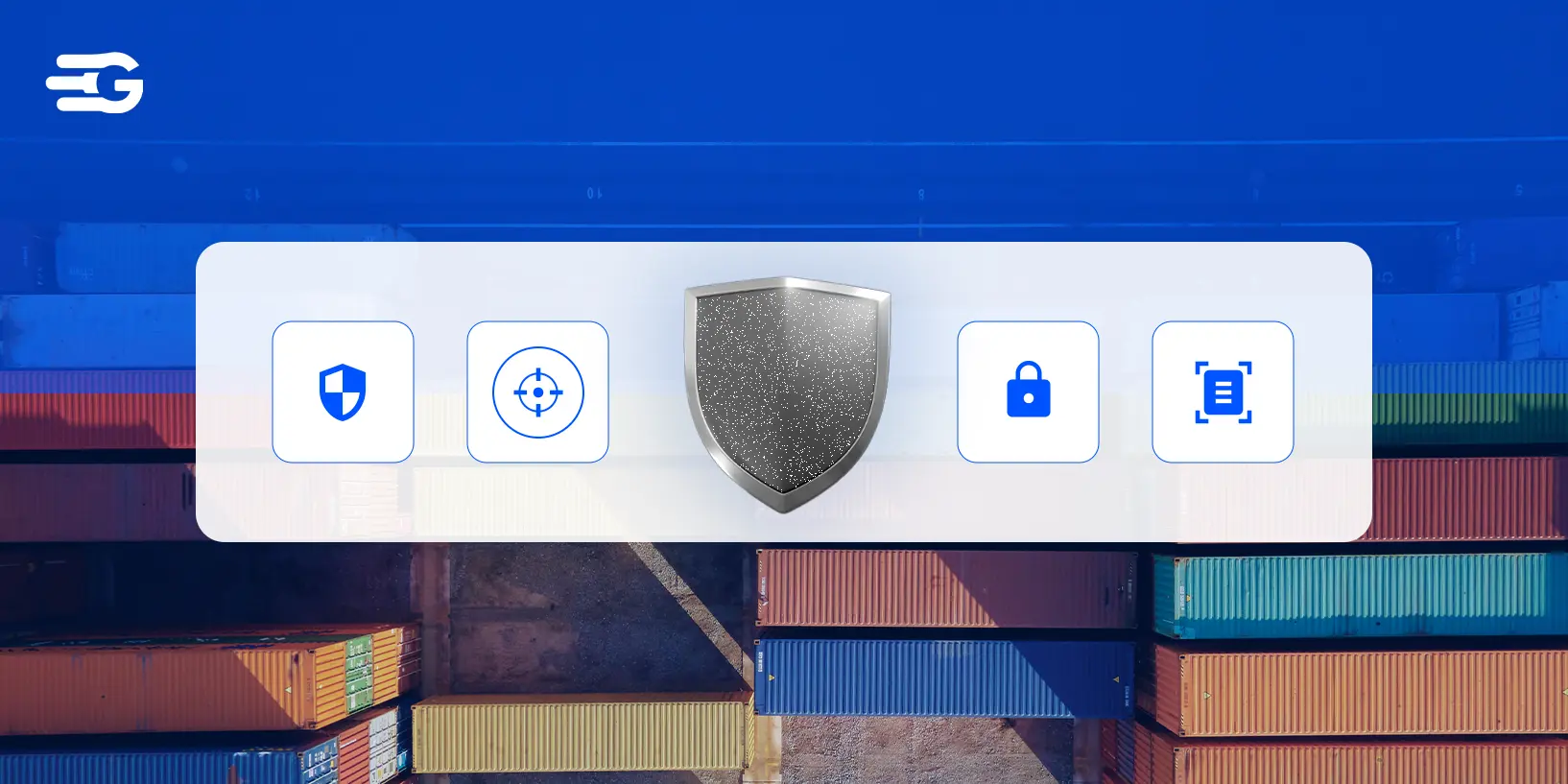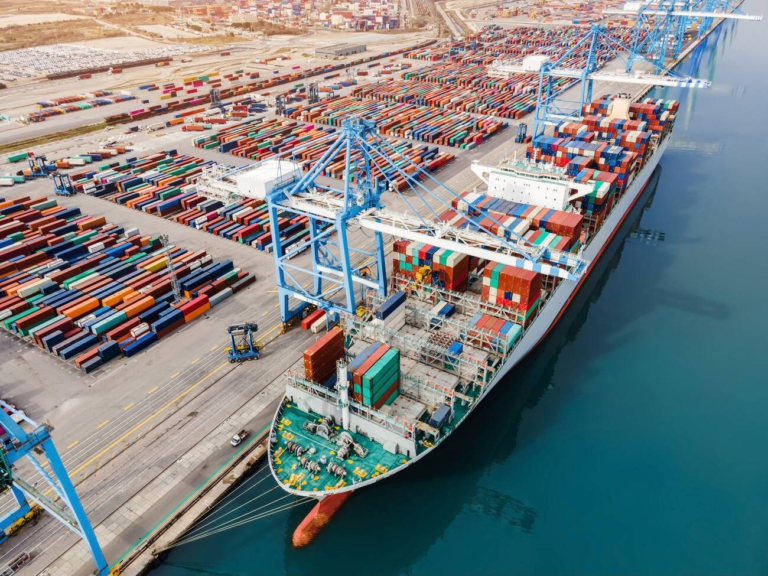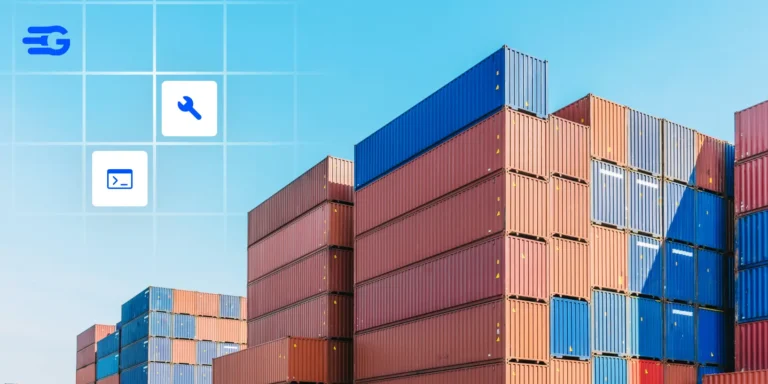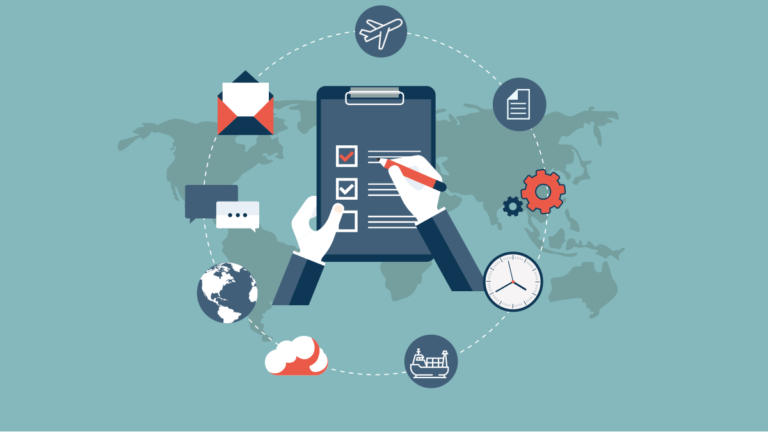Supply Chain Security: The Ultimate Guide for Risk-Free Operations
Table of Contents
A weak link in your supply chain can bring everything crashing down. Cyberattacks, cargo theft, supplier failures, and threats are everywhere. If you’re not securing your supply chain, you’re leaving your business open to financial losses, delays, and reputational damage.
This guide covers the biggest risks, best practices, and future-proof security technologies to help you stay ahead.
What is Supply Chain Security?
In a collaborative and interconnected world, supply chains are more vulnerable than ever. spanning multiple countries, vendors, and digital platforms. While this improves efficiency, it also creates vulnerabilities. A single weak link, whether a cyberattack, supplier failure, or physical security breach, can disrupt operations, cause financial losses, and damage a company’s reputation.
Supply chain security refers to the strategies, technologies, and protocols used to protect supply chains from these threats. It covers everything from cybersecurity and data protection to physical safeguards and vendor risk management.
Core Components of Supply Chain Security
A strong supply chain security strategy requires multiple layers of protection. Threats can come from anywhere, whether it’s a cyberattack, a supplier breach, or physical theft. A well-rounded approach combines physical security, digital safeguards, vendor risk management, and regulatory compliance to minimize risks.
Physical Security
Warehouses, transportation routes, and distribution centers are prime targets for theft and tampering. Companies must implement 24/7 surveillance, restricted access controls, GPS tracking, and tamper-proof packaging to prevent unauthorized entry and cargo theft. Additionally, real-time monitoring and geofencing help track shipments and detect suspicious activity before it escalates.
Cybersecurity & IT Infrastructure
Cyber threats like ransomware, phishing, and data breaches can cripple a supply chain. Businesses need multi-layered cybersecurity, including firewalls, encryption, multi-factor authentication (MFA), and endpoint security solutions to safeguard their digital assets. Regular penetration testing and employee training further reduce the risk of cyberattacks.
Vendor Risk Management
Suppliers and third-party vendors often have direct access to a company’s systems and data. If they lack strong security measures, they become an easy entry point for attackers. Companies must thoroughly vet vendors, conduct regular security audits, and enforce strict access controls. Using AI-powered risk assessment tools can provide real-time insights into vendor security practices and financial stability.
Compliance & Regulations
Failing to meet security and regulatory standards can lead to hefty fines, legal trouble, and operational shutdowns. Companies must comply with ISO 28000 for supply chain security, NIST cybersecurity guidelines, GDPR for data protection, and industry-specific regulations. Continuous compliance monitoring and automated reporting help businesses stay ahead of evolving security requirements.
Data Protection & Encryption
Sensitive data, such as customer records, financial transactions, and supplier agreements, must be encrypted and stored securely. Implementing zero-trust security models, access controls, and blockchain technology ensures that only authorized personnel can access critical information. Regular data backups and disaster recovery plans further protect businesses from cyber threats and accidental data loss.
Why is Supply Chain Security Important Today?
The increasing reliance on digital platforms and global trade has amplified security risks. Cyberattacks, counterfeit goods, and geopolitical disruptions threaten supply chain stability. Organizations that fail to invest in supply chain security best practices risk financial losses, legal penalties, and reputational damage.
Real-World Case Studies
Supply chain security isn’t just a theoretical risk. It has real consequences. Here are three recent incidents that highlight the vulnerabilities businesses face:
The MOVEit Cyberattack
In 2023, a major security flaw in the MOVEit file transfer software was exploited by the Cl0p ransomware group. This attack impacted over 2,600 organizations worldwide, including British Airways, the BBC, and government agencies. It exposed how a single software vulnerability in a widely used tool can create a ripple effect of data breaches across industries.
Applied Materials Supply Chain Disruption
A cyberattack on a supplier disrupted semiconductor shipments for Applied Materials in 2023, delaying orders and causing an estimated $250 million in losses. While the affected supplier wasn’t officially named, reports suggest MKS Instruments suffered a ransomware attack around the same time. This incident shows how even indirect attacks can lead to massive supply chain disruptions.
Gum Arabic Smuggling Amid Sudan Conflict
As of 2025, the ongoing Sudan conflict has disrupted the global supply of gum arabic, a key ingredient in Coca-Cola and M&M’s. With Sudan producing 80% of the world’s supply, illegal smuggling networks have taken over, creating ethical concerns for companies dependent on this resource. This case highlights how geopolitical instability can directly impact global supply chains and corporate responsibility.
These incidents prove that cyber threats, supplier vulnerabilities, and geopolitical risks can all shake up global supply chains. Businesses must stay proactive, continuously monitor risks, and build resilient, secure supply networks to avoid costly disruptions.
Common Supply Chain Security Risks & Threats
Every supply chain has weak spots. Cybercriminals, physical security breaches, and compliance failures can cause major disruptions. The key is identifying risks early and taking proactive steps to protect operations, finances, and reputation.
Cybersecurity Threats in the Supply Chain
Supply chains are prime targets for cyberattacks because they involve multiple vendors, third-party software, and sensitive data exchanges. Hacking, ransomware, and phishing attacks can compromise critical systems, leading to data breaches, financial losses, and operational downtime.
- Ransomware attacks can shut down entire supply chains until a ransom is paid.
- Phishing scams trick employees into revealing credentials, giving hackers access to sensitive information.
- Software vulnerabilities in widely used tools (like the MOVEit cyberattack) can expose thousands of businesses at once.
How to Reduce the Risk: Secure IT infrastructure with multi-factor authentication, firewalls, and endpoint protection. Regular cybersecurity training for employees can also prevent common attack methods.
Logistics & Physical Security Risks
Security threats aren’t just digital cargo theft. Counterfeiting and unsecured transit routes can lead to massive financial losses. Criminals target high-value goods at ports, warehouses, and during transit.
- Cargo theft costs businesses billions every year, especially in unsecured trucking routes.
- Counterfeit goods enter supply chains, damaging brand reputation and creating safety risks.
- Tampering and smuggling can occur when shipments pass through multiple hands without proper tracking.
How to Reduce the Risk: Use GPS tracking, RFID security, tamper-proof packaging, and real-time monitoring to track shipments and prevent theft. Strengthen warehouse security with CCTV, restricted access, and background checks for personnel.
Compliance & Regulatory Risks
Ignoring compliance requirements isn’t just risky, it’s costly. Failing to meet industry regulations can lead to hefty fines, legal actions, and supply chain disruptions.
- Data protection laws (GDPR, CCPA) require companies to secure customer and vendor information.
- Trade regulations and sanctions can affect cross-border shipments, leading to unexpected delays or penalties.
- Sustainability and ethical sourcing laws (like forced labor bans) are tightening, and non-compliance can damage a company’s reputation.
How to Reduce the Risk: Stay updated on global compliance laws, conduct regular audits, and ensure all vendors meet industry standards. Implement automated compliance tracking to flag potential violations before they become problems.
Best Practices to Build a Secure Supply Network
A reactive security strategy is not enough. Businesses must take a proactive approach to identify risks, strengthen defenses, and ensure seamless operations.
Leverage AI & Automation for Vendor Risk Management
AI-powered tools can analyze supplier cybersecurity protocols, financial stability, and regulatory compliance in real time. This reduces the risk of working with compromised or unreliable partners and strengthens workflow optimization.
Learn More About What is Supply Chain Automation?
Use Blockchain for Secure & Verified Transactions
Blockchain technology creates a tamper-proof ledger that enhances data integrity and end-to-end visibility across shipments and operations. This helps prevent fraud, counterfeiting, and unauthorized data alterations. Check out our detailed guide on how blockchain is transforming supply chain management.
Continuous Cyber Threat Monitoring
Real-time threat intelligence detects suspicious activities, dark web threats, and potential malware intrusions before they cause damage. Businesses should invest in automated monitoring and predictive security systems.
Strengthen Employee Awareness & Insider Threat Prevention
Employees are often the weakest security link. Regular training on phishing attacks, social engineering tactics, and security protocols reduces the risk of internal vulnerabilities and accidental data leaks.
Future Trends & Emerging Technologies in Supply Chain Security
Security threats are becoming more sophisticated, and businesses need cutting-edge technologies to stay ahead. From AI-driven analytics to blockchain security, the future of supply chain security is built on automation, predictive intelligence, and decentralized protection.
AI-Powered Threat Detection
Artificial intelligence is transforming supply chain security. Machine learning algorithms analyze vast amounts of data in real time, detecting anomalies and predicting potential security breaches before they happen. AI-driven behavioral analytics can identify unusual supplier activity, cyber threats, and even fraudulent transactions, allowing businesses to take action before disruptions occur.
Smart Contracts & Blockchain for Secure Transactions
Blockchain technology ensures tamper-proof, transparent, and verifiable transactions across the supply chain. Smart contracts automate agreements, reducing the risk of fraud, counterfeit goods, and manual errors. With decentralized ledgers, businesses can track shipments, verify supplier credentials, and maintain an unalterable record of transactions.
IoT & Secure Edge Computing in Supply Chain
The Internet of Things (IoT) plays a crucial role in real-time shipment tracking, warehouse monitoring, and predictive maintenance. However, IoT devices can also become security vulnerabilities if left unprotected. Secure edge computing processes data closer to its source, reducing cybersecurity risks and ensuring critical data remains protected.
Quantum Computing: The Next Security Revolution?
Quantum computing has the potential to break traditional encryption methods—but also create unbreakable security protocols. Companies investing in quantum-safe cryptography will gain an edge in protecting sensitive supply chain data. As this technology advances, businesses must prepare for a quantum-resistant future in cybersecurity.
Conclusion
A secure supply chain is not just a competitive advantage, it’s a necessity. Businesses must invest in cybersecurity, physical security, AI-driven threat detection, and regulatory compliance to stay ahead of evolving risks.
By taking a proactive approach and leveraging cutting-edge technologies, companies can protect their operations, prevent costly disruptions, and build long-term resilience against modern threats.he way. The next step? Ensuring your supply chain is built for resilience, adaptability, and long-term success.




![Trump’s Second-Term Tariff Impact: The 2018 Deja Vu [UPDATED] 5 Trump’s Second-Term Tariff Impact: The 2018 Deja Vu [UPDATED]](https://www.gocomet.com/blog/wp-content/uploads/2024/11/Trumps-Second-Term-The-2018-Deja-Vu-1-768x384.webp)

